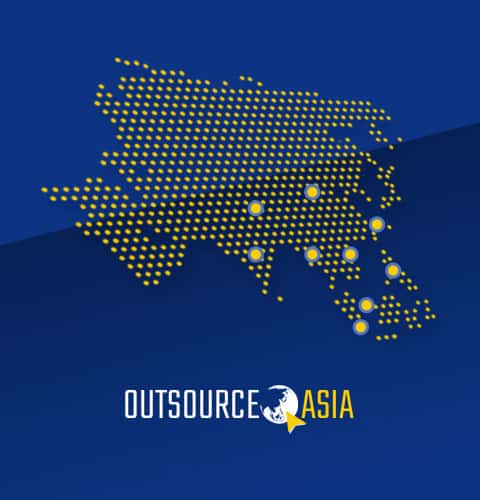
Top 10 Tools for Project Management and Collaboration in Outsourcing
We didn’t anticipate that remote work would become increasingly common by 2020, but here we are.
Employees have had to adjust to managing tasks from home after being accustomed to working in an office and collaborating with peers face-to-face.
Luckily the Top Tools for Project Management and Collaboration are here to save the day!
These lifesavers facilitate efficient project and task planning, management, and completion for individuals or groups. As a bonus, they aid in meeting stringent deadlines and keeping team members on track, all while limiting expenses.
The Value of Project Management Software
It is far more difficult to cooperate on projects remotely, so project management solutions are very useful and effective. The use of project management software has the following additional advantages:
- Better Teamwork
- Simpler Project Management
- Consistent, Quality Work
- Keeping Projects on Schedule
- Seamless Integration
Top 10 Tools for Project Management and Collaboration in Outsourcing
- Microsoft SharePoint
- Basecamp
- Trello
- Process Street
- Asana
- Microsoft Teams
- Jira
- GitHub
- Liquid Planner
- Wrike
- Microsoft SharePoint
Microsoft SharePoint, available online since 2001, is a content management system (CMS) that streamlines the process of storing and retrieving data throughout an organization. Included in this category are things like papers, pictures, movies, articles, links, databases, webpages, and assignments. You may save all of your information in one central location using SharePoint.
Microsoft has a significant competitive advantage over its rivals in this market because of the seamless integration between SharePoint and Teams.
You can use it to streamline internal operations by managing and organizing files, automating repetitive tasks with software, and even building on top of it. SharePoint will help you accomplish this essential goal for your company.
- Basecamp
Email chains, attached files, and meetings are a recipe for organizational chaos when it comes to running a business. Basecamp solves this problem by centralizing your company’s communication, team collaboration, and project management. In a marketing effort, for instance, everyone participating sees the same thing at the same time. Using a message board, participants can publish updates and receive input from others; this keeps the thread organized like a story and makes it simple to return to previous parts.
Assign tasks and track progress in the to-do list so you can check in on the team’s progress without having to constantly remind them to report back. The docs & files part is where you can save and share documents, while the schedule section displays the upcoming dates and times. Campfire is a free forum where anyone can ask questions. In a similar vein, the same toolkit can serve as the basis for a wide variety of assignments.
- Trello
Trello is a straightforward and adaptable Kanban board for managing your projects. It provides a visual summary of team activities and progress via boards and cards.
The system adapts to any company’s particular preferences and requirements. With capacity for more than a hundred users and a wide range of app connections, it meets the needs of both startups and large corporations.
- Process Street
When it comes to handling routine activities for your staff, Process Street is an invaluable resource. Make use of process templates and then execute them in several iterations as checklists. Follow along with the team’s progress and work together. You are able to monitor user activity from a central dashboard and receive completion notifications. With its straightforward layout, you can easily make well-organized papers. It’s a convenient program because of the handy keyboard shortcuts. When it comes to automating processes, Process Street’s Zapier connection is second to none. Companies are adopting Process Street for a variety of purposes, including automatic scheduling, workflow assignment, and employee onboarding.
- Asana
With the help of Asana, team members may coordinate their efforts more effectively. You can use it to keep tabs on the progress of your team’s various endeavors. Keep tabs on things without having to call a meeting or send out emails. The smarter inbox only receives the essential team updates and ignores the rest of the communications.Engage in meaningful discourse about your work, and then translate that into concrete next steps. Everything is in one convenient location for management. Team members find that using Asana is enjoyable, and they feel that they have the authority to take on even the most challenging tasks.
- Microsoft Teams
When it comes to software for teamwork in the office, Microsoft Teams is a top contender. It’s Microsoft’s comprehensive answer to rival services, consolidating a number of functions into one place, such as chat, video calling, and file sharing. With over 145 million DAU as of April 2021, this completely wipes the floor with competitors like Slack and Zoom. From 2019’s low of 13 million DAUs, this is a meteoric rise.
The success of Microsoft Team is well-deserved. Users who are already familiar with the software praise its intuitive design, speed of responses, and overall smoothness. It streamlines remote collaboration with your team. Because of this, it keeps getting more and more downloads daily.
- Jira
Software development teams using the agile methodology will find Jira to be an invaluable tool. It facilitates software project administration, tracking, and reporting. It unites your group so that you may all work together to achieve success. From every view in the program, you may make new tales and assign new tasks. Create backlogs and assign priorities to each. It combines changes, builds, and deploys using the development tools you already have. Development managers choose it because of its real-time reporting capabilities and a variety of charts (burndown, velocity chart, etc.) for keeping tabs on the team’s progress.
- GitHub
When it comes to working together on code, GitHub is hard to beat. A popular place for companies and programmers to store and organize their open-source projects. You have the option of keeping your work confidential or making it public. It makes creating and developing software easier. GitHub recommends that its software outsourcing partners use a methodology that promotes constant two-way dialogue. And collaborate in either public or closed databases. A wide variety of other apps can communicate with it. By centralizing your project management on a single, streamlined platform, you can ensure that your clients always have access to the most up-to-date information.
- Liquid Planner
Liquid Planner is a software for managing projects in modern businesses that uses predictive analytics. It manages tasks and timelines for projects so that teams may concentrate on doing their best work and moving the company ahead. The scheduling engine uses groundbreaking predictive planning technology to calculate approximate durations for each activity and then arranges them in descending order of importance. The estimated project end date can be found in Liquid Planner. Get a bird’s-eye view of your team’s workload with the help of cutting-edge workload intelligence and analytics. Your project’s stakeholders will receive reliable updates. Team members can easily collaborate and share feedback on projects thanks to web and mobile access to all relevant documents, discussions, and reports.
- Wrike
Wrike’s robust features include Gantt charts, workload and resource management, cross-team collaboration, status and process customization, real-time status updates, and visual dashboards and reporting. Project managers can use this to better organize their teams’ priorities and get more done in less time. It allows you to manage many teams and projects with ease. In addition, it aids in obtaining precise data in time for projects’ deadlines. Integrating email, communication, and customization can significantly cut down on work time.
Conclusion
Workplace flexibility has become the norm. This has made effective project management and collaboration more crucial than ever.
The top 10 tools for project management and collaboration in outsourcing provide valuable solutions for remote teams. These tools enhance teamwork, simplify project management, ensure consistent quality work, and help in keeping projects on schedule. From Microsoft SharePoint’s content management to Wrike’s robust features, these tools play a vital role in improving productivity, communication, and overall project success in the evolving landscape of remote work.
Outsource Asia can help you find a qualified project manager to oversee your remote teams and ensure their success.


